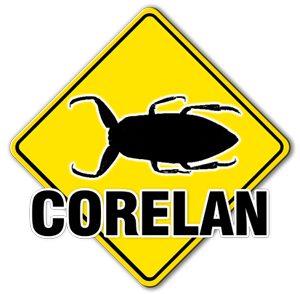1,719 views
 Create a free SAN on Fedora Core 6
Create a free SAN on Fedora Core 6
While setting up the basic infrastructure for my VMWare environment, I wondered if it would be possible to emulate a SAN on a Linux box, for free. And as a matter of fact, it is possible.
I stumbled across the iSCSI Target project on sourceforge which was built to do exactly that. In this post, I’ll try to describe the steps that I’ve performed to get it up and running. In a later phase, I’ll also show you how to connect to the SAN using VMWare ESX, or from within Windows.
My setup consists of a regular PC, with lots of RAM, fast processor, a big and fast harddrive and a Gigabit network card. This is a very minimal setup and does not offer any redundancy whatsoever, so if you want to do this yourself, make sure to add the missing redundancy pieces.
The PC was set up with a fairly default setup of Fedora Core 6. I’m not going to discuss the details about that in this post, and I will assume that you know the basics of the RedHat/Fedora OS and/or Linux in general. If you have problems setting it up and hardening it, let me know. There is something to remember. You may want to keep a separate disk or a separate partition on your harddrive, so you can assign it to the iSCSI Target software. If you’ve already set up Fedora using all of the diskspace and you don’t have any spare disks lying around, you can use the gparted tool to shrink your disk and create space for another partition.
Anyhow, after setting up the base OS, I wanted to make sure I have the latest version of all packages, so I ran a “yum update –v“. Check the iscsitarget website for any other prerequisites in terms of kernel version and development libraries. The only packages that looked important to me were the kernel-devel and openssl-devel rpm packages. You may want to verify that these packages exist prior to start the iscsitarget installation.
First of all, get the .tar.gz file from the sourceforge website. At the time of writing, the latest stable version is 0.4.15. Put the file somewhere in a folder and extract the zipped tarball
| tar xvfz iscsitarget-0.4.15.tar.gz |
Next, go in the unzipped folder
| cd iscsitarget-0.4.15 |
Before compiling the package, you need to check the kernel version of your system. You can do this by running uname –a. Next, export the correct path to the location where the kernel sources reside (for your kernel). In my example, I’m running kernel 2.6.20-1.2962.fc6, so this is what the command looks like on my system :
| export KERNELSRC=/usr/src/kernels/2.6.20-1.2962.fc6 |
Now, you can compile and install the package :
| make && make install |
So far so good. Verify if the process ended without errors and you’re almost ready to start setting up the SAN.
In this tutorial, I’ve dedicated /dev/hda3 to be used as SAN storage.
Edit /etc/ietd.conf and modify the ‘Target’, ‘Lun’ and ‘Alias’ entries. You can find more information on what values to use for those 3 entries in the file itself. In my environment, these are the values that I’ve used :
Target iqn.2001-04.be.corelan:san1
Lun 0 Path=/dev/hda3
Alias iSCSI
You can, of course, add multiple targets, add multiple Lun’s to a target and so on. If, for example, you want to add another Target and corresponding lun of 100Gb, this is what you can do:
| mkdir /san dd if=zero bs=1M count=102400 > /san/100gb.file |
This will create a big file of 100Gb, which can be used as a san lun as well.
Next, edit /etc/ietd.conf and add the following lines :
Target iqn.2001-04.be.corelan:san2
Lun 0 Path=/san/100gb.file,Type=fileio
Alias iSCSI2
At this point, you are ready to start the service :
| /etc/init.d/iscsi-target start |
You should get the following entries on your console or in the logfiles (/var/log/messages)
| iSCSI Enterprise Target Software – version 0.4.15 iotype_init(92) register fileio iotype_init(92) register blockio iotype_init(92) register nullio |
If you want the iscsi-target daemon to start when your linux system boots, run the following command :
| chkconfig iscsi-target on |
In a next post, I will show you how to connect to the SAN using Windows and in another post, I’ll explain how to do this using VMWare (ESX)
© 2007 – 2008, Peter Van Eeckhoutte (corelanc0d3r). All rights reserved.


